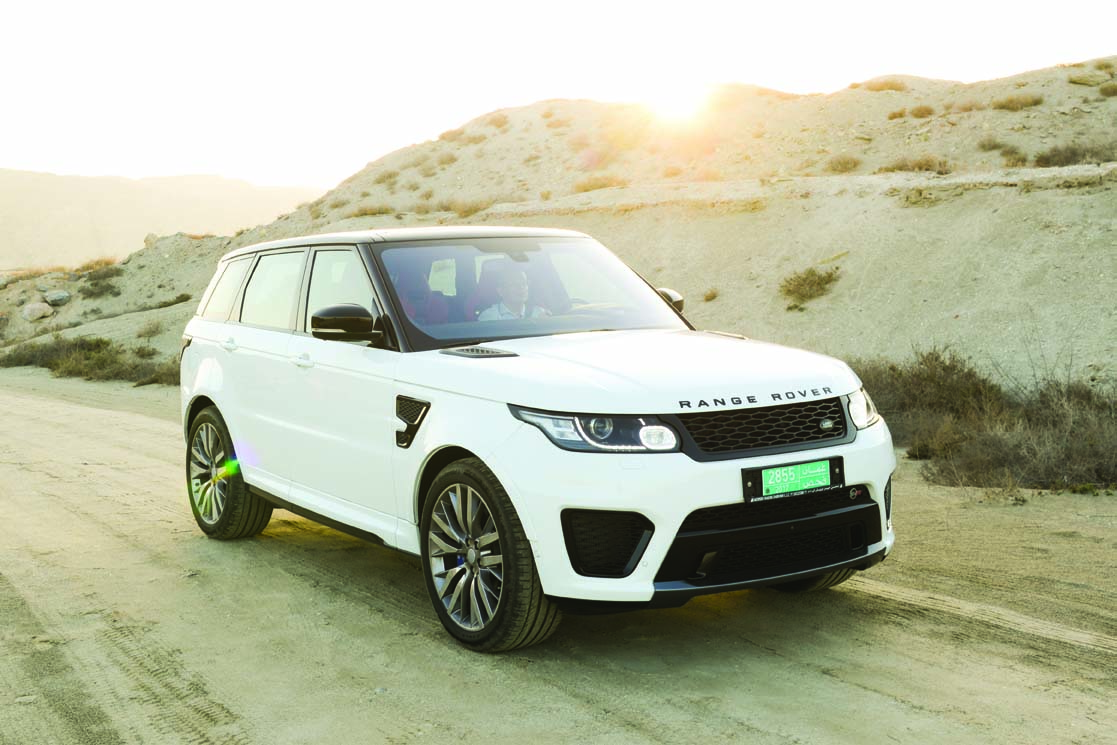Range Rover Sport SVR exhibits a combination of super-SUV credentials with a luxurious drive. An OER review
Since 1948 Land Rover has been manufacturing authentic 4x4s that represent true ‘breadth of capability’ across the model range. Defender, New Discovery, Discovery Sport, Range Rover Sport, Range Rover and Range Rover Evoque each define the world’s SUV sectors, with 80 per cent of this model range exported to over 170 countries. Jaguar Land Rover special vehicle operations has the responsibility within special operations to create a range of high performance production models for both Jaguar and Land Rover, low-volume, high-value limited edition models for both brands, and vehicle personalisation products. The Range Rover Sport SVR showcases the capabilities and success of the special vehicle operations at its best.
Merging legendary all-terrain capability with 550PS V8 power and advanced traction technology provides Land Rover’s fastest vehicle with unique real world performance. When the perfect traction offered by clean, dry asphalt isn’t available, most sports cars immediately suffer from a lack of grip, stability and performance. But no sports car has the benefit of Land Rover’s legendary all-terrain know-how. In a unique test the SVR completed the 0-100km/hr sprint on standard fit Michelin 275/45 R21 All Season Tyres on everything from asphalt and grass to snow and sand, using Land Rover’s innovative terrain response 2 technology.
The intelligent system automatically selects the appropriate driving mode to suit traction conditions including: general driving, dynamic, grass/gravel/snow, mud and ruts, sand, and rock crawl. The driver can also use a simple rotary controller on the centre console to choose a specific mode.
The main areas of development in the Range Rover Sport SVR over the standard Sport model centre revolves around the supercharged V8 engine (which now produces a thumping 542bhp and 502b ft of torque), the chassis, the brakes, the interior and the suspension.
The brakes are no bigger than normal but the way in which they are cooled has been significantly improved. At the front, there’s a deep bumper with three huge, black mesh grilles to help cool the massive engine and brakes, while the clamshell bonnet covers the narrow headlamps that sweep back into the front wings. It’s at the back where the SVR looks most muscular, though. The four exhaust pipes emit a massive V8 rumble and are integrated into the gloss-black lower bumper, which helps to reduce the car’s aero drag.

Inside, to keep up with the SVR’s extra performance, there are four individual, figure-hugging bucket seats that hold you in place no matter the ferocity of the drive. Like the rest of the cabin, they’re trimmed in plush leather and offer plenty of comfort.
There’s lots of contrasting, brushed-aluminium trim adding to the SVR’s racier feel, but it’s balanced perfectly with supreme luxury. The steering and suspension have been tuned to provide crisper, sharper responses than in the regular Sport model, with alterations to the software of the dynamic drive system making the SVR feel much more focused on the road.
And then there’s the new exhaust system, which has again been tuned to deliver an even muscular noise. Sometimes claims like that make you wonder, but in this case the sound backs up the claim; the SVR Range Rover Sport emits a harder edged bark pretty much everywhere in the rev range, but never more so than under full throttle at over 3700rpm, with its baffles opened wide so that it can be heard from many hundreds of yards away.
On road drive
On the road, the SVR feels instantly more alive but also much more controlled than the regular models. The steering’s extra feel and response that are most noticeable to begin with. The SVR also feels immediately more nimble on its feet as a result.
And boy does it go when you put your foot down. Experiencing this kind of acceleration in a car this big, and which still boasts such a majestic driving position, feels ever so slightly surreal to begin with. In any of its drive modes the SVR feels faster than it has any right to considering it weighs as much as it does (2,335kg). In dynamic mode, however, with the exhausts on full noise and the throttle and gearshift software in their most aggressive settings, it feels like a proper wild animal in a straight line.
Which is why it’s even more surprising to discover that it now has the cornering composure and braking power to match such thundering performance. It even handles pretty crisply for something so vast, with much more precision on turn.






